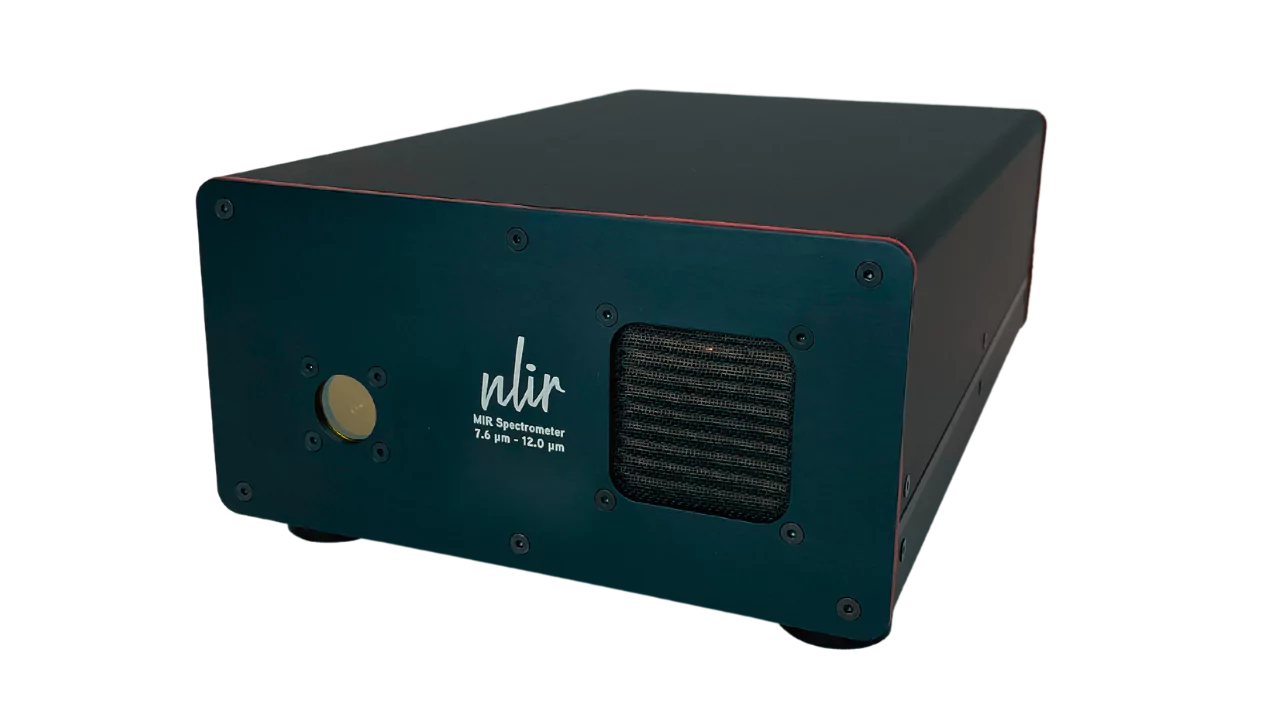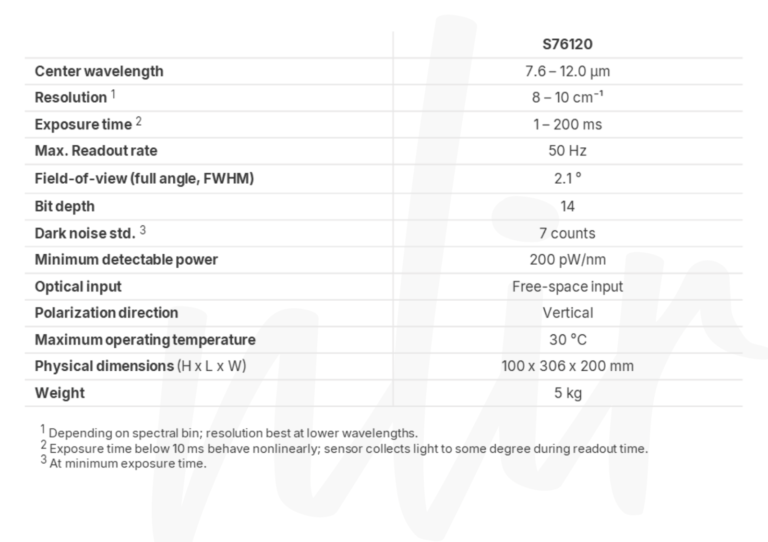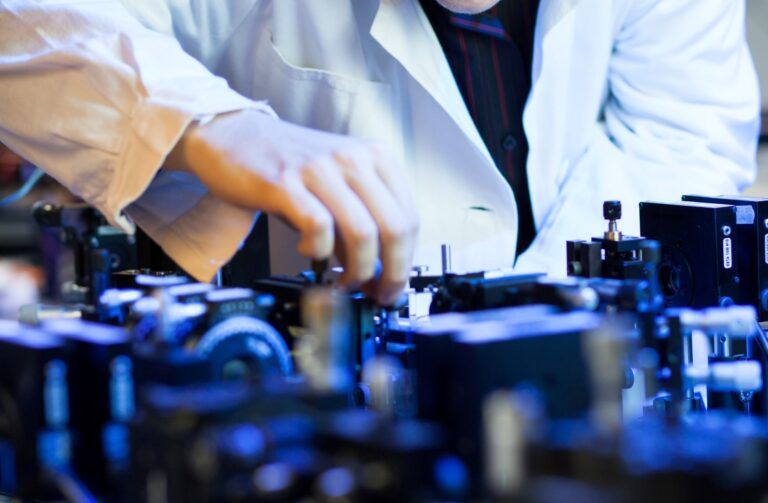Prototype Spectrometer 7.6 - 12.0 μm
1316 – 833 cm-1
Product Details
The mid-infrared region from 6 μm to 12 µm (1667 cm -1 to 833 cm -1 ) is very interesting for many industrial and research applications because many molecules have defining absorption lines exactly there. Unfortunately, the detectors (typically HgCdTe) used in FTIR systems for spectroscopy purposes suffer from significant amounts of thermal noise due to their low bandgap. Hence, high levels of input light are needed with long exposure times to achieve a satisfactory signal-to-noise ratio. NLIR is pushing its technology to cover this extended wavelength region in the future. Currently, the prototype edition of the long-wavelength spectrometer covers 7.6 μm to 12.0 μm (1316 cm -1 to 833 cm -1 ).
The spectrometer is currently available with a 50 Hz full-spectrum readout rate and a resolution of 10 cm-1. The sensitivity is 200 pW/nm (-67 dBm/nm) with full aperture exposure.
The prototype spectrometer has a large free-space input, which makes it easy to couple in lots of light and ideal for reference measurements (e.g. in ATR crystals, gas cell, sample transmission/reflection, etc.) with a fixed light source. Due to the large input, the response of the spectrometer is, however, sensitive to the angle of input, which makes an input power calibration necessary for the characterization of light sources.
Check out the features, specifications, and other applications of the S76120 Prototype Spectrometer 7.6 – 12.0 μm.
Contact our team today to request a quotation.

“We are thrilled to be able carry out in-situ detection of fine species thanks to NLIR spectrometer’s high sensitivity. The high SNR gives superb contrast to discern the spectral signatures from thermal background signal.”
Grace Shu Hui Ham, Measurement, Control and Data sciences Cluster, ArcelorMittal
Got any questions?
Do not hesitate to contact us at info@nlir.com.
Specifications


Looking for an expert to help you with your project measurements?
Reach out to our experts for solutions to your measurement challenges.

